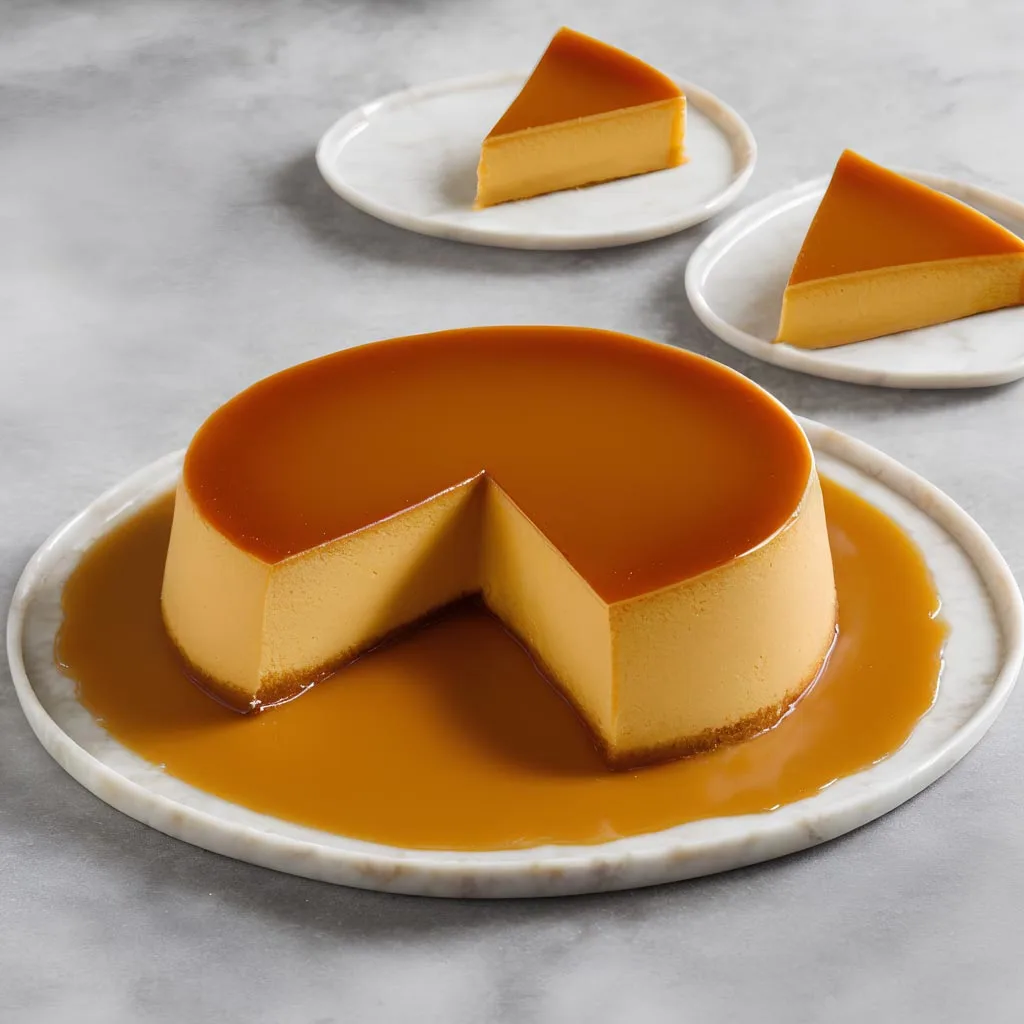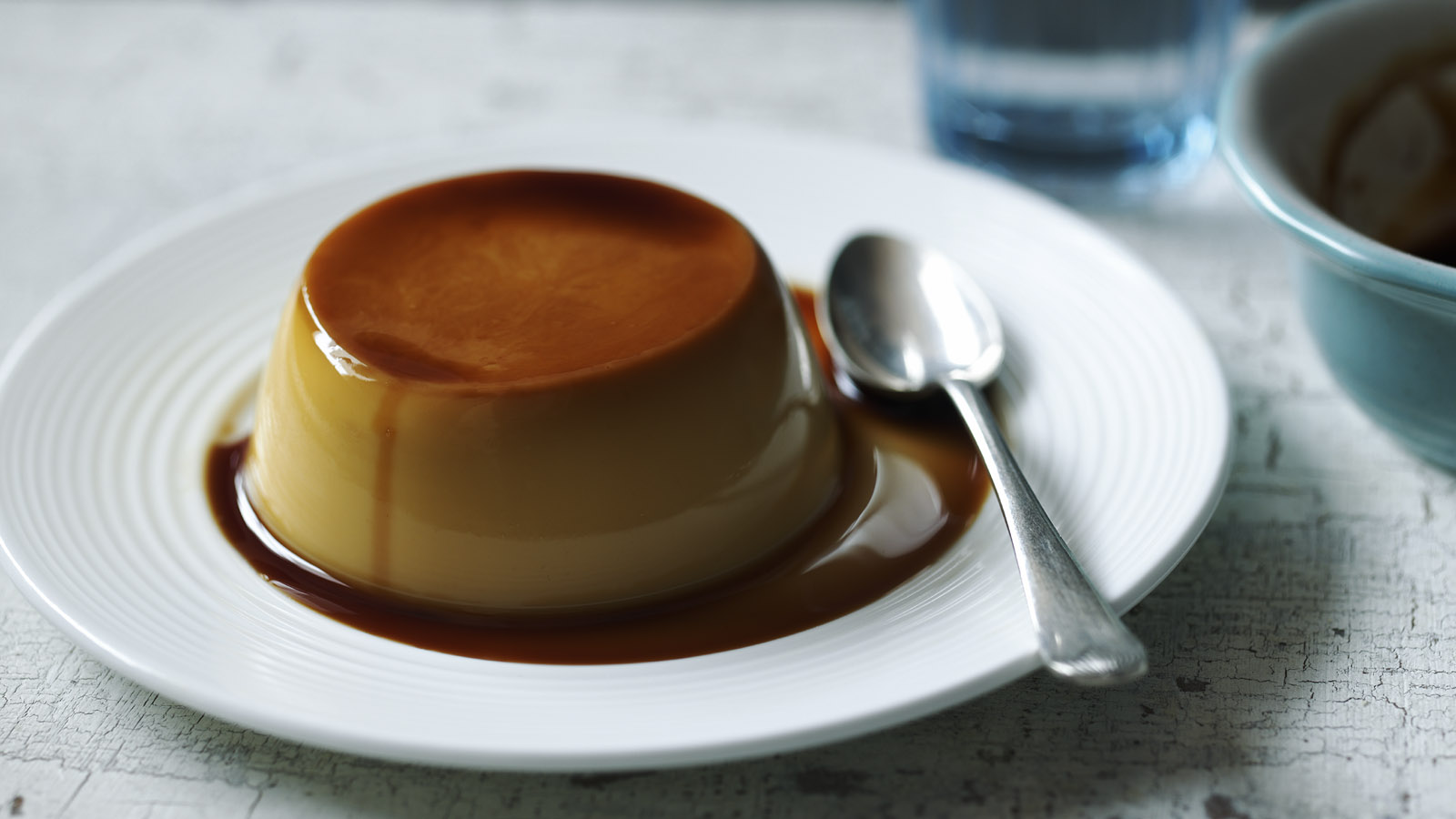The History & Recipe for Crème Caramel
106

Creme caramel, also known as flan or caramel custard, has a rich history that spans several centuries and has evolved through different cultures. The origins of this delightful dessert are somewhat unclear, as various regions claim to have developed their own versions.
- One popular theory suggests that creme caramel has its roots in medieval Europe, where custards and egg-based desserts were common. As trade routes expanded, ingredients like sugar became more accessible, contributing to the development of caramelized sugar toppings.

- The dish gained popularity in France, where it became known as "flan." In the 17th century, French chefs started experimenting with caramelizing sugar and pouring it into molds before adding a custard mixture. The technique of caramelizing sugar on the bottom of a mold, then pouring the custard over it, became a defining characteristic of creme caramel.

- During the 18th and 19th centuries, the recipe spread across Europe and Latin America, adapting to local tastes and ingredients. In Spain and Latin America, it's often referred to as "flan," while in other European countries, it's known as creme caramel.

- In the 20th century, creme caramel gained international popularity and became a staple in many culinary traditions worldwide. Its simple yet elegant presentation and the contrast between the creamy custard and the sweet caramelized sugar make it a beloved dessert for many.
Today, creme caramel is enjoyed in various forms and variations globally, with each culture adding its own unique touch to the classic recipe. Whether it's called flan, creme caramel, or caramel custard, this dessert continues to be a timeless and cherished treat for people around the world.

Classic Crème Caramel Recipe;
Ingredients:
For the Caramel:
- 1 cup granulated sugar
- 1/4 cup water
For the Custard:
- 4 large eggs
- 1/2 cup granulated sugar
- 2 cups whole milk
- 1 teaspoon vanilla extract
Instructions:
1. Preheat the Oven:
- Preheat your oven to 325°F (163°C).
2. Make the Caramel:
- In a saucepan, combine the sugar and water for the caramel over medium heat.
- Stir until the sugar dissolves, then let it boil without stirring.
- Continue boiling until the mixture turns a deep amber color. Keep an eye on it to avoid burning.
- Once the caramel is ready, pour it into the bottom of your caramel molds or ramekins. Swirl each mold to coat the bottom evenly with caramel.
3. Prepare the Custard Mixture:
- In a mixing bowl, whisk together the eggs and sugar until well combined.
- Heat the milk in a separate saucepan until it's warm but not boiling. Gradually add the warm milk to the egg mixture, whisking constantly.
- Stir in the vanilla extract.
4. Strain the Custard:
- Strain the custard mixture through a fine-mesh sieve or cheesecloth to remove any lumps.
5. Fill the Molds:
- Pour the strained custard mixture into the caramel-coated molds or ramekins.
6. Bake in a Water Bath:
- Place the filled molds in a deep baking dish. Add hot water to the baking dish until it reaches halfway up the sides of the molds. This creates a water bath, ensuring even and gentle cooking.
- Bake in the preheated oven for about 45-60 minutes or until the custard is set. You can check for doneness by inserting a knife into the center; it should come out clean when the creme caramel is ready.
7. Chill and Serve:
- Allow the creme caramel to cool to room temperature, then refrigerate for at least a few hours or overnight.
- To serve, run a knife around the edge of each mold, place a plate upside down over the top, and invert the mold onto the plate. The caramel sauce will flow over the custard.
Enjoy your homemade creme caramel! Feel free to garnish with fresh berries or mint leaves for added flair.
Creme Caramel recipe videos;
Crème Caramel Recipe;
Professional Baker Teaches You How To Make CRÈME CARAMEL;
How To Make A Creme Caramel;
References;
- Stevenson, Angus; Waite, Maurice (18 August 2011). Concise Oxford English Dictionary: Book & CD-ROM Set. OUP Oxford. ISBN 978-0-19-960110-3.
- Perrier-Robert, Annie (2012-10-18). Dictionnaire de la gourmandise (in French). Groupe Robert Laffont. ISBN 978-2-221-13403-0.
- "The Epic Food and Landscape of Patagonia". Saveur. 18 March 2019. Retrieved 2020-07-21.
- "Leche asada". www.solopostres.com. 13 February 2015. Retrieved 2020-07-21.
- ""Traditional Cuisine of the Makarska Littoral"".
- Larousse, Librairie (2022-08-30). Larousse Gastronomique: The World's Greatest Culinary Encyclopedia, Completely Revised and Updated. Clarkson Potter/Ten Speed. ISBN 978-0-593-57774-5.
- Gastón Acurio (2008). Larousse de la gastronomía peruana: diccionario gatronómico ilustrado. Q.W. Editores. p. 151. ISBN 978-9972-58-937-9.
- Morena Cuadra; Morena Escardó (5 February 2019). The Big Peruvian Cookbook: 100 Delicious Traditional Recipes from Peru. Skyhorse. p. 355. ISBN 978-1-5107-3786-0.
Thank you for sharing your time!
You can complete great comment tasks at here. #cremecaramel #dessert #caramel #bakery #cuisines #foodinspiration #food #chefs












































